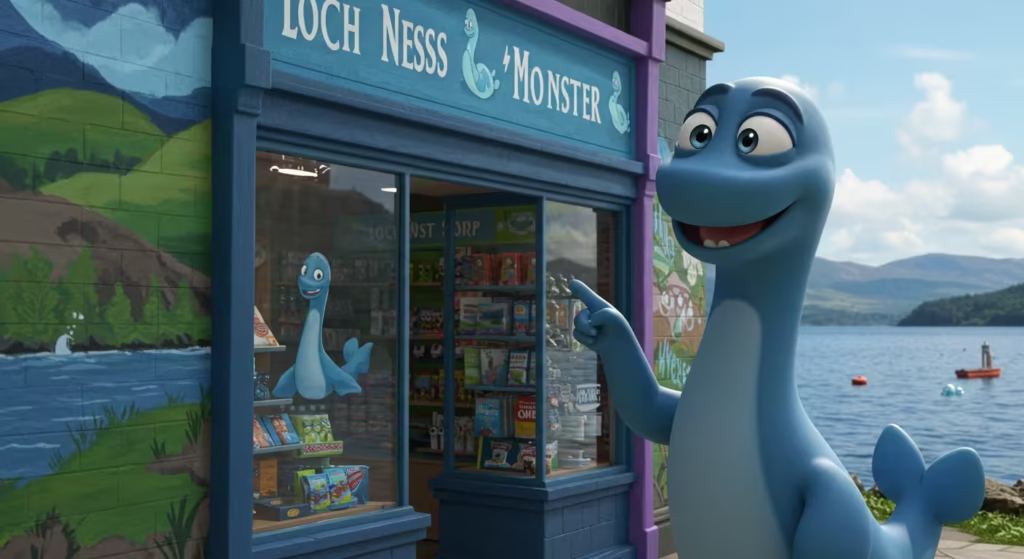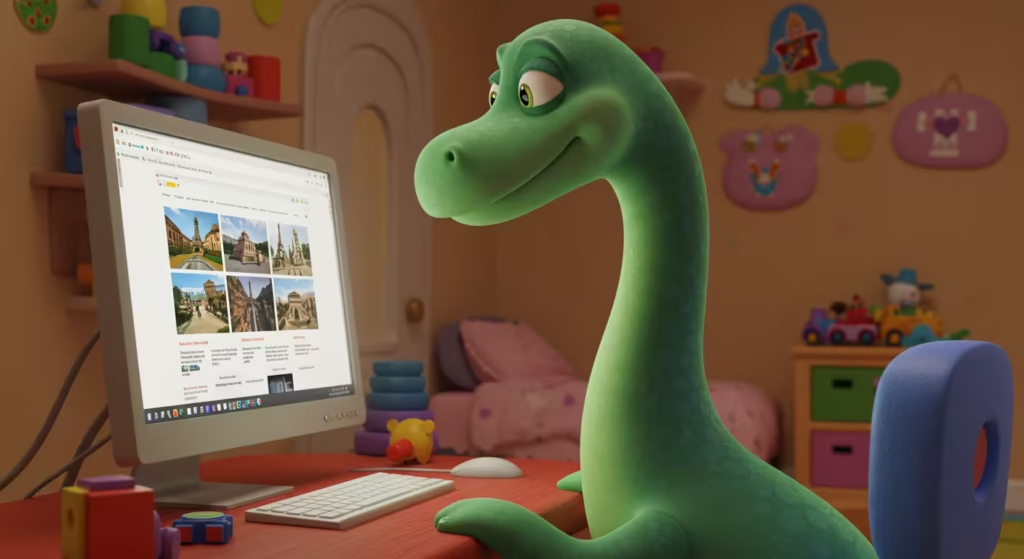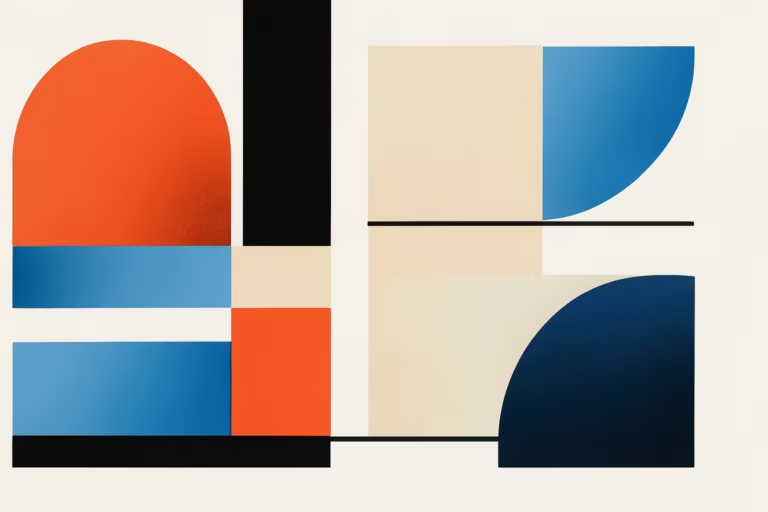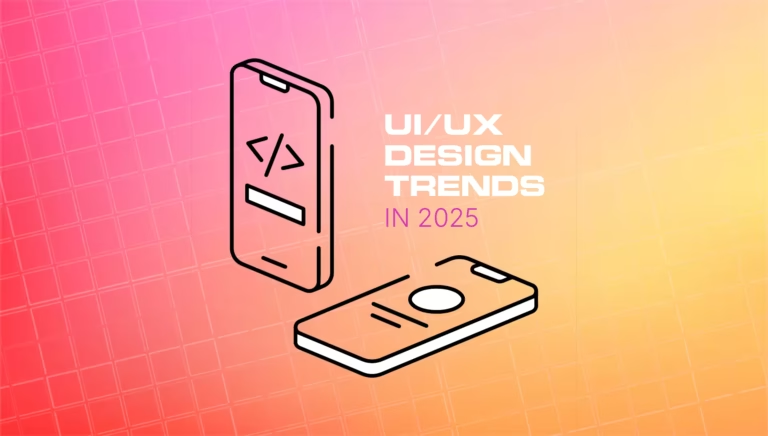Imagine a tourist getting off the train in Inverness with a phone and looking up the “best coffee near Inverness Castle.” They’re swiping past cafés that appear to have been closed since 2014 in a matter of seconds. They then arrive at a website that displays a fast-loading video of baristas creating latte art while hand-drawn sketches of Loch Ness serve as the background. Can you guess where the foot traffic is going?
That brief instance encapsulates why local web design is no longer a “nice-to-have” in the Highlands of Scotland. It’s the distinction between being found and being disregarded. Below, we’ll address the queries Highland owners enter into Google at 11 p.m. following a 14-hour workday, and we’ll demonstrate how to respond to the results without using up all of the available funds. In this article, we will explore all the reasons why it’s so important to go digital in 2025.
Why hire a local Inverness web designer instead of a big-city agency?
Short version: they know your clients, have been on your streets, and are able to get together for coffee tomorrow. Even more juicy is the extended version.
Local Insight Equals Local Bookings
1. Hyper-Local SEO That Works
By targeting web queries that both tourists and locals actually use, such as “best Highland whisky tours” or “cosy Inverness B&B,” an Inverness designer can make sure your website appears in the appropriate Google results. Your company is seen—by the right people, at the right time—thanks to this insider strategy.
2. Real Relationships and Accountability
Do you need a rapid content refresh, update, or modification? There is a local designer just around the block. Unlike faceless email chains or remote Zoom sessions, you can meet in person, talk about changes over coffee, and receive candid, jargon-free advice—all of which save time and frustration.
3. Superfast Loading for Highland Customers
Internet in Highland can be inconsistent. In order to minimize load times and prevent visitors from leaving, local web designers host websites on servers that are close by and tailored for local conditions.
4. Fixed Prices—No Nasty Surprises
Local studios typically provide fixed, transparent packages that cover all necessary services. You won’t have to deal with sly revision fees or hidden hourly rates, which are crucial for maintaining small business budgets.
5. Supporting Your Community
Hiring locally supports local jobs, keeps money in the Highlands, and strengthens the business community. That has an effect on your high street.
6. Immediate Local Knowledge
No one is more familiar with Highland consumers’ demands, popular events, or seasonal trends than a local. Local designers foresee and get ready for the most important events in your community, whether it’s the North Coast 500 effect or the Celtic festival season.
Six big wins of keeping it local are unpacked here, but the headline is simple: local insight equals local bookings.
How do I know if my website actually needs a rebrand?
You may be too near to notice the warning signs. Go over this brief checklist:
- Does your homepage still show last year’s closed-for-refurbishment banner?
- Is the colour palette stuck in 2013 turquoise?
- Do you cringe giving out the URL at networking events?

Sometimes, you’re too close to your own business to spot the signs your website is working against you. Ask yourself:
- Are outdated messages still live?
Is your homepage still showing last year’s “closed for refurbishment” banner? Any irrelevant promotions cluttering the hero section? - Does the colour palette scream 2013?
Has your brand colour combo become a victim of passing trends — turquoise overload, anyone? - Are you reluctant to share your URL?
If you cringe when handing out business cards (or secretly hope people don’t visit your site), it’s probably time.
Other Red Flags to Watch For:
- The design is neither mobile-friendly nor responsive.
- Inadequate SEO results
- Slow loading speeds
- Outdated information or obsolete news in your footer or blog
- inconsistent image styles, logos, or typefaces
Bonus: Prior to beginning your rebranding, create a SMART goal using the free worksheet available at the above website.
If you nodded twice, you’re due for a website and branding overhaul. The five tell-tale signs (plus a free SMART-goal worksheet) are laid out here.
What’s the cheapest way to build a website in 2025?
Bootstrappers rejoice: you can get online for less than the price of a weekend in Skye.
- Start with a free Astra theme for a one-page WordPress website.
- Get a domain for £6 on Namecheap.
- Use Peakplex Internet, a local favourite, to host it for £5 per month.
- Use Canva designs and stock photos to replace your own phone photos.
In 2025, building a website from scratch is simpler and less expensive than ever before, making it ideal for independent contractors, sole proprietors, and small business owners who want to stand out without going over budget. This is your comprehensive guide to creating a modern website for less than £60.
1. Pick a Free Website Builder or CMS
- WordPress: Opt for a single-page layout using a popular, free theme such as Astra or Neve.
- Ultra-Budget Alternatives: For even simpler needs, consider Carrd, which allows you to build one-page sites for around £7/year—ideal for portfolios or landing pages.
2. Choose a Low-Cost Domain Name
- With.co.uk domains starting at £2.49/year and.com domains for less than £8, Namecheap is still a popular choice. Renewals are simple with no additional costs.
- Nowadays, most people agree that Cloudflare is the most affordable registrar, offering names at wholesale prices, typically between £8 and £10 per year for .coms.

3. Host Your Site For Less
- Hostinger consistently ranks as the cheapest web host in the UK for 2025, with plans from £1.85/month. It comes with free SSL, weekly backups, and robust performance—even for WordPress installations.
- UK locals can also check out options like Unlimited Web Hosting UK at £2.49/month for reliable cPanel hosting.
4. Build & Customise With Free Tools
- Utilise images from your own smartphone or make graphics with Canva’s free edition.
- Use pre-made blocks and sections from your preferred theme or page builder to organise your content—no developer is required!
5. Go Live: A Step-by-Step Price Breakdown
| Service | Provider | Typical Price (2025) |
|---|---|---|
| Domain Name | Namecheap/Cloudflare | £2–£8/year |
| Web Hosting | Hostinger | £1.85–£2.50/month |
| WordPress Theme | Astra/Neve | Free |
| Images/Graphics | Canva, Your Photos | Free |
| Annual Total | Under £60 |
6. Super-Saver Tactics to Drop Costs Even Further
- Use a free website builder plan (e.g., Wix, Weebly) if you don’t mind basic features and small ads on your site.
- Opt for a free .xyz or .online domain for the first year (as low as 79p) via Namecheap.
- Sign up for longer hosting terms to lock in the lowest monthly rates—some annual deals drop costs to nearly £1/month.
- Keep your website to one page to save on builder and content generation costs (Carrd is brilliant for this).
7. Recommended Tools for Ultra-Low-Cost Website Building
- Hostinger – budget hosting, WordPress-optimised.
- WordPress.com – simple free website builder plan.
- Astra Theme – ultra-light free theme.
- Carrd – frictionless one-page sites for portfolio or link-in-bio.
- Canva – free stock images and design templates.
8. Watch: Price Breakdown & Tutorials
- BEST Website Builder in 2025 – My Top Recommendation (YouTube)
- Stop Overpaying! The CHEAPEST Domain Name Registrar for 2025 (YouTube)
With careful tool selection and a DIY mindset, a functional, professional site is absolutely achievable for less than the price of a weekend away—no coding, no overspending, and no regrets.
Ten ultra-low-cost tactics—complete with tool links—are spelt out here. Total spend: under £60 and a Saturday afternoon.
Is online video marketing worth the hassle for small Highland businesses?
Short-form reels shot on an iPhone now outperform £5k TV ads. Stats from 2025:
- 82 % of buyers say video convinced them to hit “Book Now”.
- Pages with video keep visitors 2.6× longer—Google notices.
- A 60-second clip of your chef filleting salmon can raise conversions by 80 %.
online video marketing in 2025 is not just worth it, it’s essential, especially for small Highland businesses looking to stand out and connect with customers authentically.
Here’s why:
- Huge impact for minimal cost: Short-form reels shot on an iPhone now outperform traditional £5k TV ads. No need for fancy studios or hefty budgets!
- Buyers trust video: 82% of buyers say video convinced them to “Book Now”—that’s huge for local businesses relying on bookings and reservations.
- Improved engagement: Pages with video keep visitors 2.6× longer. More time on your site boosts your Google rankings and visibility.
- Conversion boosts: A simple 60-second clip—say, your chef filleting fresh salmon—can increase conversions by 80%. That’s a game changer.
For ideas tailored to Highland businesses, Inverness Design Studio’s guide offers plug-and-play formats like “meet the maker” interviews, product demos, or stunning drone shots of Glen Coe—content that tells your unique story and connects with viewers emotionally.
If you’re still unsure about whether to jump in, keep in mind that your competitors probably already use video and that audiences are more interested than ever in engaging, real content.
In conclusion, embrace online video marketing right away because it’s an easy, affordable, and very successful approach to expand your company in the Highlands and beyond.
How do I choose the right web design company in Inverness?
Crowded market? Ask three questions before you sign:
- “Show me a Highland customer in my field.” (Travel? Shop? (Care facility?)
- “What does your £250 starter package include?”
- “Will I pay monthly rent indefinitely, or will I own the completed site?”
The 2025 buyer’s checklist, plus red flags to avoid, is neatly summarised here. Spoiler: transparent pricing wins every time.
What industries in the Highlands are already nailing it online?
From AI chatbots on B&B sites to accessible care-home portals, the studio’s portfolio reads like a “who’s who” of Highland hustle.
| Industry | Killer Feature | Live Example |
|---|---|---|
| Whisky Tourism | Loch-Ness-view booking widget | Speyside Tours |
| Artisan Crafts | Shopify + Instagram shop sync | Harris Tweed Collective |
| Care Homes | Large-font menus & voice search | Ness Bank Lodge |
| Outdoor Gear | 360° product spins | Fort William Mountaineering |
Peek at more sector wins here.
Print still matters—do I need business cards in 2025?
Yes, but make them count. Swap flimsy 300 gsm for recycled cotton stock, add a QR code that jumps straight to your new mobile-first site, and finish with spot-UV thistle artwork. The full menu—letterheads, pull-up banners, eco packaging—is detailed here.

In 2025, print is still important, particularly for business cards, as long as you don’t view them as merely an archaic custom. Business cards, which seamlessly combine tactile impact and digital connectivity, are far from going extinct and are currently experiencing a rebirth.
“It’s tempting to think of business cards as a relic of the past. However, these compact pieces of card stock continue to hold a critical place in the business ecosystem.”
Why Business Cards Remain Essential in 2025
- Tangible First Impressions: Digital techniques cannot replace the tactile connection that a well-designed business card provides. Consider that positive handover at a conference or networking event. The texture, weight, and polish of a card instantly set the tone for how your brand is seen.
- Memorability: A unique business card can be pinned to a board, placed on a desk, or even start a conversation to help you stay at the forefront of people’s minds rather than getting buried in social media feeds or email inboxes.
- Instant Connectivity: During in-person gatherings and across generations, exchanging business cards is still the fastest way to exchange your information because it’s simple and doesn’t require internet connectivity.
- Hybrid Experiences: Cards that combine digital and print elements, like a QR code that scans straight to your mobile-first website, can close the gap between physical and online businesses by providing immediate access to more detailed content without compromising that important human touch.
- Sustainable, High-End Materials: Cheap, flimsy supplies are no longer available. Recycled cotton, bamboo, and even cutting-edge alternatives like stone or seed paper are becoming more and more popular as the eco-conscious standard rises. These not only feel and look fantastic, but they also demonstrate your dedication to sustainability, which is becoming a more important aspect of corporate identity.
- Bold, Minimal Design: Current trends place a strong emphasis on bold typography and simple layouts that allow your contact information and important images to stand out. Your card will stand out from typical templates thanks to custom graphics, spot-UV effects (your own artwork!), and distinctive colour selections.
- Integrated NFC & QR Codes: Newer cards frequently have NFC chips or QR codes that connect to websites, reservation systems, or video portfolios with ease. Your contacts can interact with your brand more deeply thanks to these digital bridges.
- Tactile Finishes: Adding texture and interest through multisensory experiences, like raised foil, spot UV, or embossed text, encourages recipients to physically interact with your card and remember you.
“Rather than hiding the eco-friendly nature of the materials, many brands highlight these characteristics through design elements that call attention to the materials’ natural textures, fibres, or unique properties.”
Beyond the Card: The Full Print Menu
If you’re investing in print, don’t stop at business cards. Think in terms of a cohesive brand experience:
- Letterheads & branded stationery: Add gravitas to client correspondence.
- Eco packaging: Essential for product businesses focused on sustainability.
- Pull-up banners: Still the backbone of trade show presence.
- Brochures & lookbooks: Provide lasting takeaways and support your story.
For a comprehensive overview of options—from recycled card stocks to innovative finishes and branded essentials—see the detailed menu at Inverness Design Studio.
In summary, you absolutely still need business cards in 2025—but only if you make them intentional, beautiful, and connected to your wider brand strategy. Ditch the old templates, invest in quality, create an experience, and watch your print materials turn simple introductions into memorable connections.
The bottom line: act small, think global.
Highland businesses thrive on authenticity. Pair a locally optimised website with story-driven video, wrap it in sketchbook charm, and back it up with snappy business cards. All in, you’re looking at £250–£850—the price of a single newspaper ad that ends up as fish-and-chip wrapping.
Ready to press go? Book a free 15-minute strategy session with the Inverness Design Studio and watch your Google rankings—and your footfall—climb faster than a red deer on the ridge.



